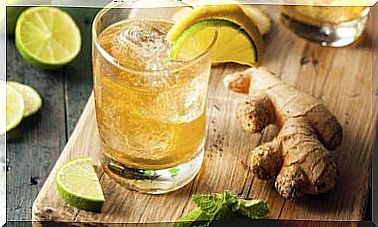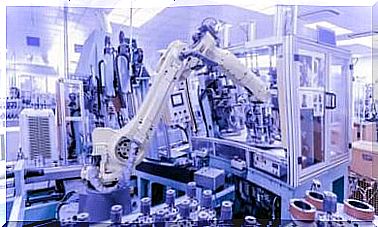Toxic Substances, The 12 Most Dangerous In Processed Foods

Pay close attention to what you eat! With each bite, you could ingest toxic substances that are very dangerous for your health. Today, the foods we find in supermarket chains and restaurants are far from natural.
The companies that have the task of “feeding us” use large quantities of preservatives, chemicals and other additives that, in the long run, are harmful to our body. This article will help you to know which are the most dangerous toxic substances contained in processed foods.
List of toxic substances contained in food
The next time you go shopping, be very careful. Read the packaging and labels carefully. You will realize that most of the foods we buy and consume contain at least one of the toxic substances listed below.
High fructose corn syrup
It is found in sweet foods. For example, it is contained in drinks such as Coca-Cola and in many desserts. It is also widely used for the preparation of fast-food foods. The possible consequences of corn syrup are obesity, insulin resistance, increased abdominal fat and heart disease.
Trans fats
Also known as hydrogenated or partially hydrogenated fats, they are found in the ingredients of many processed foods such as cookies, breaded foods or frozen foods. Possible consequences of trans fats include heart disease, diabetes and cancer.
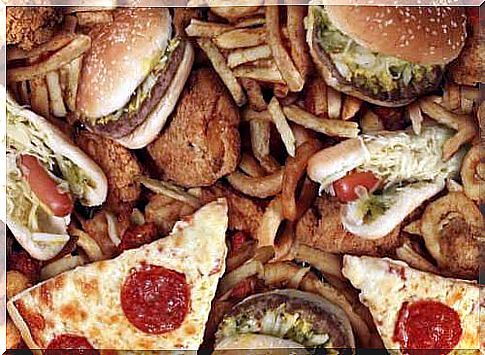
Artificial flavors
They are contained in all sweets, fizzy drinks, biscuits and ready meals. Artificial flavors are really bad for our health. There are more than 100 different chemical additives within this group whose goal is to “give a truer flavor” to food. The possible consequences of artificial flavors are allergies and behavioral disorders such as hyperactivity.
Monosodium glutamate
Also known as sodium glutamate or MSG, it is found in many salty foods such as potato chips or breaded foods because it is used in place of common salt or sodium chloride. Monosodium glutamate can cause:
- Chest pains.
- Palpitations of the heart.
- Headache.
- Excessive exaltation of taste, which gives us the feeling of wanting to eat more.
- Lack of perception of other flavors and desire to add more and more salt to dishes.
Artificial dyes
Like artificial flavors, dyes are also found in almost all processed foods. Even if on the labels of sweets, candies, biscuits or sweets the dyes appear accompanied by the abbreviation indicative of the non-prohibited substances, do not trust them.
In fact, dyes can cause allergies, sinus congestion, hyperactivity (especially in children) and severe childhood mental disorders such as attention deficit hyperactivity disorder (ADHD).
Artificial sweeteners
Within this group we find different types of sweeteners:
- Aspartame, which has negative consequences on the nervous system and which can cause headaches, dizziness, memory loss and seizures.
- Suclarose, which reduces the amount of positive bacteria present in the intestine.
- Acesulfame potassium or acesulfame K which, according to some studies, can cause cancer.
- The neotamus (E961), the consumption of which has not yet been declared completely safe.
- Saccharin, which causes cancer.
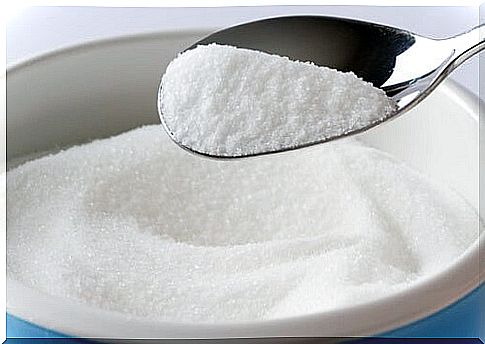
Regardless of the type of sweetener, the effects are the same that glutamate has on the salty taste, but in this case we are talking about sweet. It is said that it “burns” the taste buds or, better yet, inhibits them, and therefore we do not realize that there is an excessive amount of sugar.
Precisely for this reason we will continue to add more and more sugar or sweeteners to infusions and desserts.
Would you like to know more?
Preservatives
This is another of the “stars” of the processed foods we buy at the supermarket. There are different types of preservatives and they all have consequences.
Preservatives include TBHQ or antioxidant E319 (causes nausea, tinnitus and vomiting), polysorbates 60, 65 and 80 (which cause infertility and anaphylaxis and weaken the immune system), BHT or E321 and BHA or E320 (cause problems kidney and liver, as well as being potential carcinogens), sodium benzoate or E211 (which causes allergic reactions and is carcinogenic) or sulphites (causes of allergic reactions and especially asthma).
Rapeseed oil
While many believe that rapeseed oil is a health ally, which is precisely why it has become very popular in recent years, it actually has very harmful consequences.
This oil, present in 30% of the products we consume, “drowns” the cells, which prevents their proper functioning. It can cause pulmonary emphysema and breathing difficulties, first steps towards cancer.
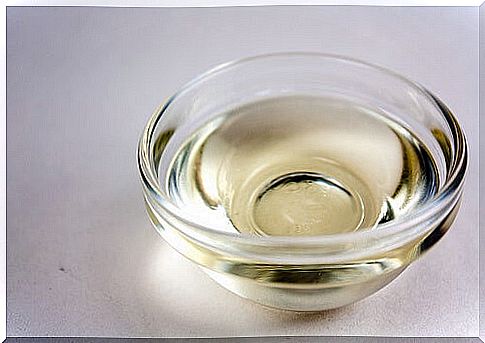
Sodium nitrite
It is used as a food preservative and to maintain the colors in meat derivatives (which have a very low percentage of real meat). It goes well with other types of salt, those of seasoning: sodium nitrate and potassium nitrate. It prevents bacterial poisoning, but can cause cancer.
Defoamer
This industrial chemical is used, for example, for the preparation of chicken nuggets. It causes stomach tumors and damages DNA.
Anti-caking agents
They are used to absorb moisture from food and are usually added to powdered or dried products. They consist of phosphate, carbonate, silicate and aluminum.
The latter element is among the causes of Alzheimer’s. It should also be specified that aluminum silicate (present in anti-caking agents) is also used in influenza vaccines.
Emulsifiers

The main ones are three: brominated vegetable oil, polysorbate 80 and carrageenan. They are found in chocolate milk, ice cream, cottage cheese or cottage cheese, jelly and baby food. These toxic substances remain in the body for years.







